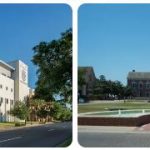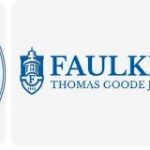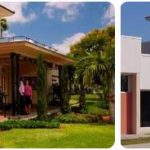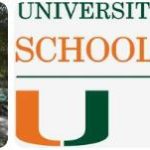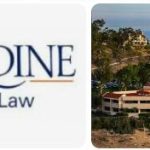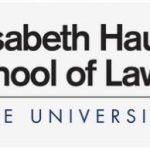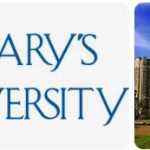Hofstra University School of Law was founded in 1970 as the Nassau County branch of New York Law School. It was the first law school in Nassau County, and its initial mission was to provide a legal education to students who live on Long Island. In 1976, the school became independent from New York Law School and was renamed Hofstra University School of Law. The new name reflected the fact that it was now an independent institution, with its own faculty and curriculum. In 1984, Hofstra acquired the former campus of Brooklyn Law School in Hempstead, New York, and moved operations there. This move enabled Hofstra to expand its programs and offerings significantly by taking advantage of its larger campus size. Since then, Hofstra has continued to grow steadily, offering a wide range of degree programs for both JD and LLM students. It also offers several specialty centers for legal education such as the Center for Children, Families & the Law; Center for Entrepreneurship & Technology; Center for International Legal Studies; and Institute on Estate Planning & Elder Law. The school is committed to providing an excellent legal education while also promoting diversity in the legal profession through initiatives such as its Diversity Fellowship Program.
Hofstra University School of Law is located in the state of New York. As one of the leading law programs, Hofstra University School of Law has a high average LSAT score of 155-159 when recruiting new students. As a return, the median starting salary for law graduates reaches $160,000 per year. See the following table for detailed admissions information and career profiles of Hofstra University School of Law.
Hofstra’s School of Law is on a semester system, encompassing a fall and spring semester, with a three week winter break during which several intensive skills programs are taught and a study abroad program is offered in Curaçao. The school also holds a summer session during which several classes are offered for students, along with a number of study abroad opportunities. The law school is also the first ABA approved law school in the United States to offer programs in Cuba.
Hofstra School of Law offers concentration in 15 areas of study: Child and Family Advocacy, Civil Litigation, Corporate & Commercial Law, Constitutional Law, Consumer Law, Corporate and Securities Law, Criminal Law and Procedure, Energy and the Environment, Family Law, Health Law, Intellectual Property Law, International and Comparative Law, Labor and Employment Law, Real Estate, and Taxation.
Rankings
As of 2011, the Maurice A. Deane School of Law is nationally ranked #74 by the lawschool 100. The law school also ranks among the top 100 nation by the U.S. News law school rankings[3] and is considered a ‘rising star’ among New York City area law schools[citation needed]. The school was named one of the country’s best public interest law schools by preLaw magazine, a national publication aimed at prospective law students. Among the 75 law schools that made the list, Hofstra ranked 11th.
Hofstra Law is ranked the No. 54 school in the country in placing partners in U.S. offices of the 100 largest national law firms (J.D. classes of 1986 and after), according to a study by Theodore P. Seto, “Where Do Partners Come From,” Journal of Legal Education.
Admissions: Hofstra University
| Fall 2019 Admissions and Enrollment Statistics | |
|---|---|
| Total number of full- and part-time applicants | 4,893 |
| Total number of full- and part-time acceptances | 1,891 |
| Overall acceptance rate | 38.6% |
| Total number of full- and part-time first-year students enrolled | 401 |
| Number of full-time program applicants | 4,573 |
| Number of full-time program acceptances | 1,853 |
| Full-time acceptance rate | 40.5% |
| Number of first-year full-time students enrolled | 391 |
| Number of part-time program applicants | 328 |
| Number of part-time program acceptances | 38 |
| Part-time acceptance rate | 11.6% |
| Number of first-year part-time students enrolled | 10 |
| Fall 2019 GPA and LSAT Scores | |
| 25th-75th percentile GPA scores for all students | 3.27-3.7 |
| 25th-75th percentile LSAT scores for all students | 155-159 |
| 25th-75th percentile undergraduate GPA for full-time students | 3.27-3.7 |
| 25th-75th percentile LSAT scores for full-time students | 155-159 |
| 25th-75th percentile undergraduate GPA for part-time students | 3.08-3.67 |
| 25th-75th percentile LSAT scores for part-time students | 152-158 |
Careers: Hofstra University
| Bar Statistics (Winter and Summer 2018 administrations) | |
|---|---|
| State where the greatest number of first-time test takers took the bar | NY |
| School’s bar passage rate for first-time test takers | 86.5% |
| Statewide bar passage rate for first-time test takers | 80.7% |
| Class of 2018 Graduates | |
| Total graduates | 343 |
| Graduates employed at graduation | N/A |
| Graduates known to be employed nine months after graduation | 96.3% |
| Starting Salaries of 2018 Graduates Employed Full-time | |
| 25th percentile private sector starting salary | $67,500 |
| Median private sector starting salary | $160,000 |
| 75th percentile private sector starting salary | $160,000 |
| Percent in the private sector who reported salary information | 29% |
| Median public service starting salary | $52,000 |
| Areas of Legal Practice (Class of 2018) | |
| Percent employed in academia | 3.0% |
| Percent employed in business and industry | 26.0% |
| Percent employed in government | 13.0% |
| Percent employed in all judicial clerkships | 6.0% |
| Percent employed in law firms | 48.0% |
| Percent employed in public interest | 3.0% |
| Percent employed in an unknown field | 1.0% |
| Percent employed in a judicial clerkship by an Article III federal judge | 0.3% |
| 2018 Graduates Employment Location | |
| Graduates employed in-state | 84% |
| Graduates employed in foreign countries | 0.3% |
| Number of states where graduates are employed | 18 |
| New England (CT, ME, MA, NH, RI, VT) | 1.3% |
| Middle Atlantic (NY, NJ, PA) | 88.1% |
| East North Central (IL, IN, MI, OH, WI) | 0.3% |
| West North Central (IA, KS, MN, MO, NE, ND, SD) | 0.0% |
| South Atlantic (DE, DC, FL, GA, MD, NC, SC, VA, WV) | 4.4% |
| East South Central (AL, KY, MS, TN) | 0.3% |
| West South Central (AR, LA, OK, TX) | 0.9% |
| Pacific (AK, CA, HI, OR, WA) | 2.5% |
| Mountain (AZ, CO, ID, MT, NV, NM, UT, WY) | 0.0% |
| Employment location unknown | 1.9% |
| Career Services | |
| (Data appear as originally submitted by this school) | |
| Career services operations | The Office of Career Services organizes recruitment programs, teaches resume writing and interviewing techniques, provides comprehensive career counseling and professionalism training. “On-campus” interviews are conducted on LI and in Manhattan providing full access to the New York legal market; individualized counseling and reciprocal rights ensure opportunities in other regions. |
| Job Type | |
| Bar admission required or anticipated (e.g., attorney and corporate counsel positions, law clerks, judicial clerks) | 76.0% |
| J.D. preferred, law degree enhances position (e.g., corporate contracts administrator, alternative dispute resolution specialist, government regulatory analyst, FBI special agent) | 5.0% |
| Professional/other (jobs that require professional skills or training but for which a J.D. is neither preferred nor particularly applicable; e.g., accountant, teacher, business manager, nurse) | 8.0% |
| Nonprofessional/other (job that does not require any professional skills or training or is taken on a temporary basis and not viewed as part of a career path) | 4.0% |

